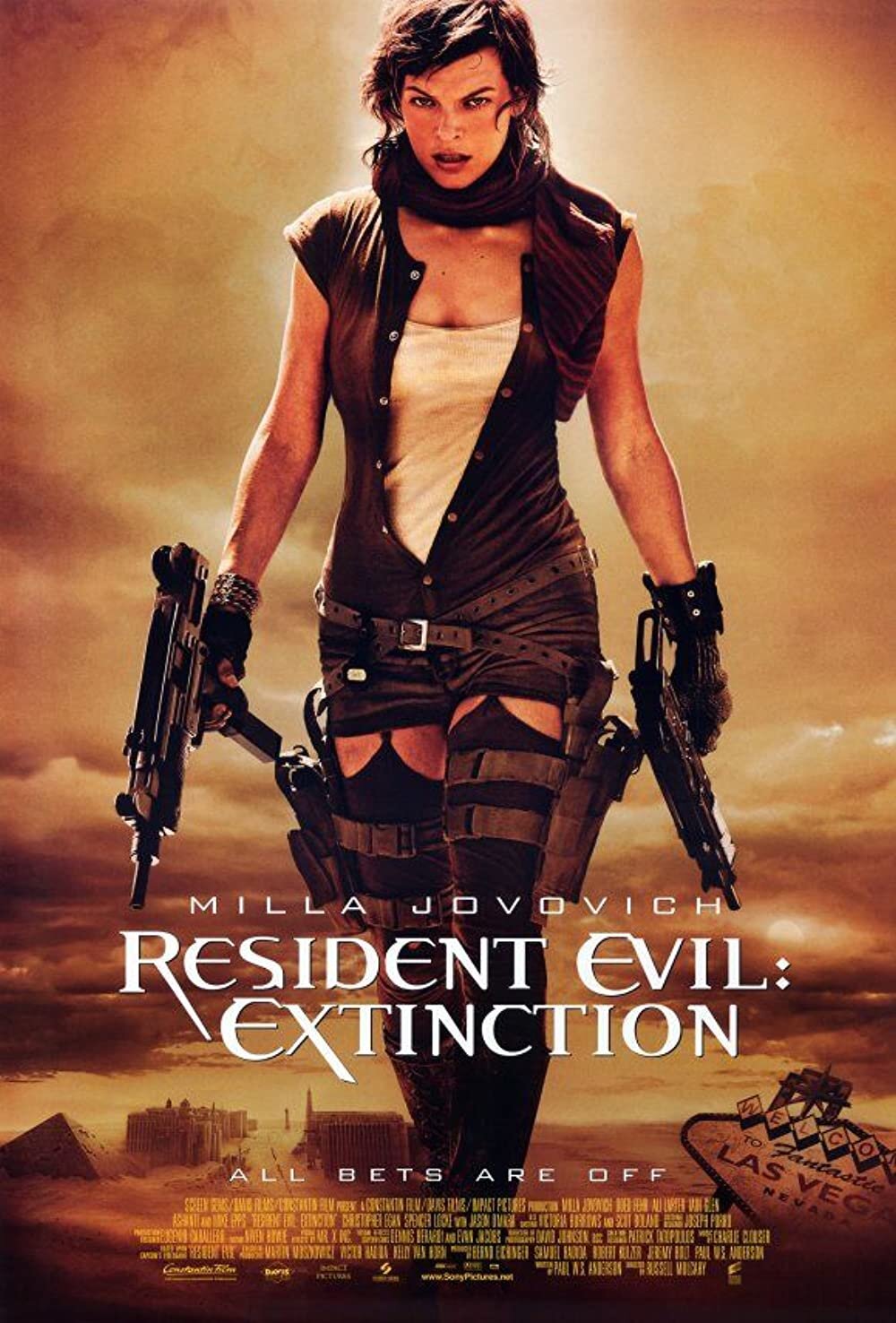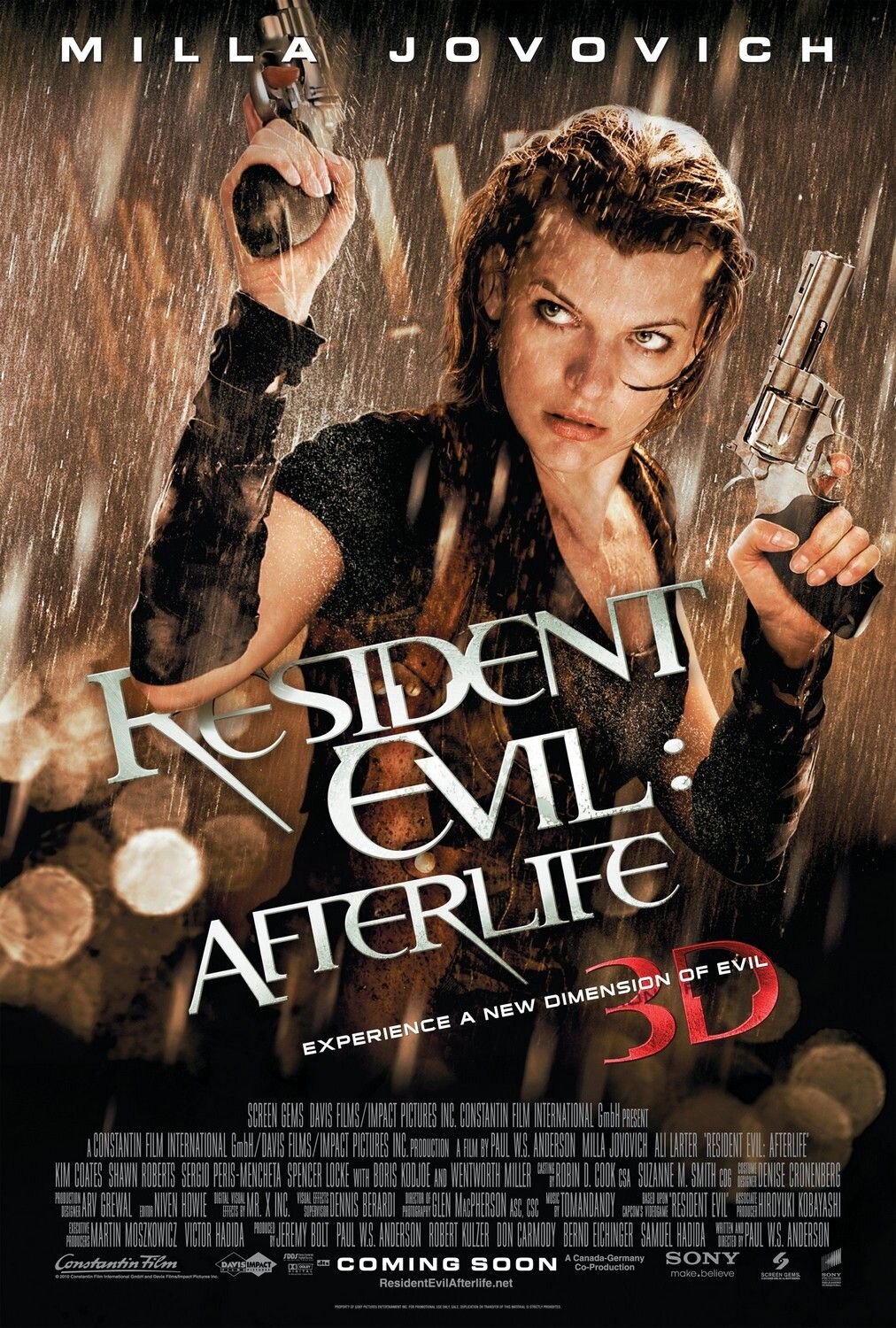Ranking the Resident Evil films from worst to best
Critics have been unfairly mistreating the “Resident Evil” (2002-2021) franchise. Looking them through a modern eye, you will see that there is diversity! Strong female characters! Plenty of monsters! No love story or damsels in distress! Instead willing participants will relish at the sight of AI traps, plethora of zombie enemies and cool industrial soundtracks dressing (mostly) slick action sequences and fast pace proceedings that do not require too much thought. The audience seems keen to take part in this monstrous journey endorsing Paul WS Anderson’s and Milla Jovovich’s Alice with a whooping $1.2 billion dollars worldwide. The release of a new reboot titled “Welcome to Raccoon City” (2021) is an excuse really to rank all the live action “Resident Evil” flicks from worst to best - some claim they are terrible but we beg to differ. Grab your zombie gear and let’s go!
Budget and Box Office
Most successful entry
The Final Chapter (2016): 314 million dollars worldwide
Most expensive entry
Retribution (2012): $65 million dollars
Highest score in Rotten Tomatoes
The Final Chapter (37): 98%
Lowest score in Rotten Tomatoes
Apocalypse (2004): 19%
Highest IMDB score
Resident Evil (2002): 6.6
Lowest IMDB score
Welcome to Raccoon City (2021): 5.2
Rotten Tomatoes and IMDB
Monsters: Zombies, zombie dogs, licker, Nemesis, zombie crows, super zombies, tyrant, las plagas zombies, las plagas dogs, Axeman, bloodshot
Antagonists: Red Queen, Alexander Isaacs, Major Timothy Cain, Albert Wesker, Jill Valentine, Lisa Trevor, William Birkin, Umbrella mercenaries
Directors: Paul WS Anderson, Alexander Witt, Russell Malcahy
Cities: Raccoon City (fictional), Washington DC, Las Vegas, Tokyo
Landmarks: Las Vegas strip, Capitol building, White House, Red Square, Times Square, Shibuya crossing
Director: Johannes Roberts
When a more faithful than the Anderson-Jovovich with emphasis on the horror and gore aspect of the games was announced, naturally fans were quite enthusiastic. Despite the billion dollar enterprise that Anderson had managed to create, it was (let’s be honest) a reimagining of the games’ canvas for a mainstream audience than a proper adaptation for the big screen. Yet this new reboot is plagued by a low budget, subpar special and make up effects, terrible acting, abysmal writing and cinematography and even the various zombie creatures are unable to scare single ant. Director-writer Johannes Roberts decided poorly to to cover the first two “Resident Evil” games within a 100 minute running time rushing through key moments and crafting zero scares in the process.
Faithfulness:
🕹️
Direction:
🎬
Horror:
😵
Zombies:
🧟🧟🧟
Action:
⚔️⚔️⚔️
Best moment: The marketing campaign. The film is a travesty of epic proportions.
6. The Final Chapter (2016)
Director: Paul WS Anderson
“The Final Chapter” manages to deliver an appropriate send off for Alice’s story by tying everything together as best as it can. However, boasting some of the worst editing (i.e., Doobie White) in recent years, this bizarre creatively choice renders Milla’s commitment and effort to perform her physically demanding action scenes pointless. Anderson abandons in the last entry his trademark stylized approach in favor of desaturated colors and hyperkinetic framing that obscures anything we see on the big screen and removing any sense of dread and suspense. There are some scarce moments of inspiration (e.g., a fight on top of a tank that is pursue by undead hordes) but the swift resolution to pretty much everything along with an expendable cast makes “The Final Chapter” an underwhelming experience.
Faithfulness:
🕹️
Direction:
🎬
Horror:
😵
Zombies:
🧟🧟🧟
Action:
⚔️⚔️⚔️
Best moment: A fan-tastic meeting between Ruby Rose and a gigantic metal fan.
5. Apocalypse (2004)
Director: Alexander Witt
Following the unexpected success of the first film, a bigger sequel was inevitable. “Apocalypse” tries to cram too many elements from “Resident Evil 2” (1998) and “Resident Evil: Nemesis” (1999) while raising up the dramatic stakes with a larger variety of monsters in a short period of time. A larger budget and the intriguing setting of a zombie infested city though cannot save “Apocalypse” from the now outdated Paul Greengrass editing style, the banal direction of second unit helmer Alexander Witt, the PG-13-zation of the proceedings and the parade of stock characters. Nevertheless, there is a strangely appealing schlocky charm to it; from the stand offs with Nemesis to the cheesy climax with a by the numbers villain and explosions at every turn, “Apocalypse” obtains easily the title of a try hard. Milla on the other hand seems more confident and handles her material with easy while Sienna Guillory is the real life counterpart of Jill Valentine.
Faithfulness:
🕹️🕹️
Direction:
🎬
Horror:
😵
Zombies:
🧟
Action:
⚔️
Best moment: Alice’s first fight with Nemesis has all the schlocky charm of a B-movie.
4. Extinction (2007)
Director: Russell Malcahy
By the third entry, “Resident Evil” had started incorporating intriguing (but unexplored) plot elements even if it does not actually propel (or satisfy) the cliffhangers from the previous films. Aussie Russell Malcahy (“Highlander“) lends the film a distinct visual style and an interesting background to explore zombie skirmishes. The R-rating is back with Anderson’s script taking cues from the (then) “Mad Max” (1979-1985) trilogy adding an expanded cast. Malcahy shoots the straightforward story well delivering some genuinely inspired moments (zombie crows! Tyrants!) while Milla continues to look gorgeous as Alice; a joy at this point to watch her dispatch zombies in creative ways. Iain Glenn does feel a bit hammy as the Machiavellian scientist but that is all part of the film’s charm and B-movie roots.
Faithfulness:
🕹️
Direction:
🎬🎬🎬
Horror:
😵😵
Zombies:
🧟🧟🧟
Action:
⚔️⚔️⚔️
Best moment: An attack from infected crows makes for a surprisingly dynamic sequence.
3. Retribution (2012)
Director: Paul WS Anderson
“Retribution” is probably the wackiest of the series simply because it has the most elaborate and stylized set pieces. Anderson is back at the director’s chair after the hugely successful “Afterlife” conjuring elaborately monster fights with complementary hi-tech production design. A practical car chase in Moscow’s Red Square is a delight while a corridor shoot’em’up has Milla going John Wick before Keanu did his thing in exquisite choreography. Yet all the trademarks of Anderson’s shortcomings as a screenwriter are here - weak characters, incomprehensible plot, and a total lack of emotional depth. Still, it is hard not to root for “Retribution” with its futuristic cinematography, OTT action sequences, a charismatic lead and one of the most original opening credits sequences off all time.
Faithfulness:
🕹️
Direction:
🎬🎬🎬
Horror:
😵
Zombies:
🧟
Action:
⚔️⚔️⚔️
Best moment: The inventive opening credits were beautiful in 3D but the practical based car chase is mindless joy.
2. Afterlife (2010)
Director: Paul WS Anderson
“Afterlife” is stitched together with minimum threads of plot, yet it brings a sense of universal dread that is being assisted by real locations and some truly wonderful shots. The operatic slow motion opening credits of a rainy night at Tokyo’s busy Shibuya crossing puts us right in the middle of action while the attack of Alice at Umbrella’s headquarters is a glorious excuse of gratuitous violence and style. Anderson inserts here fan favorite supervillain Albert Wesker to complicate matters as well as the Redfield siblings although they do not have much to do besides shooting stuff or sprouting standard lines. While it lacks tremendous substance, it makes up for it with its gonzo style and Milla who still remains the main attraction.
Faithfulness:
🕹️🕹️
Direction:
🎬🎬🎬🎬
Horror:
😵
Zombies:
🧟🧟
Action:
⚔️⚔️⚔️
Best moment: Gorgeous and hyper-stylized opening credits with Tomandandy’s pulse pounding score.
1. Resident Evil (2002)
Director: Paul WS Anderson
The videogame adaptation that started it all, the first “Resident Evil” is easily the best. Anderson takes his time to get to the meat of the action and his script is relatively small in scale, away from the overblown spectacles of the sequels, which keeps the film focused and tight. Anderson has crafted nicely a techno-horror actioner with brilliant frames and camerawork capturing perfectly the feeling of claustrophobia and the sense of inevitable (we know there are zombies in the lab, the question is when our heroes will be put against them). It does help that in a stroke of genius he brought Marco Beltrami and Marilyn Manson to compose an unnerving score giving “Resident Evil” a slight edge over films with similar themes. The opening sequence where the Red Queen shuts down the hive is a masterclass in tension while the corridor laser stand off has now became iconic. Serving as a metaphor for the ethical boundaries that mega corporations cross every day, “Resident Evil” works on a variety of levels because it does not try to be smart. The cast seems genuinely involved with the material and nobody thought that Milla Jovovich will explode to the action heroine status that she has today.
Faithfulness:
🕹️🕹️🕹️
Direction:
🎬🎬🎬🎬🎬
Horror:
😵😵😵
Zombies:
🧟🧟
Action:
⚔️⚔️⚔️
Best moment: The laser gets activated and things don’t go as planned.








